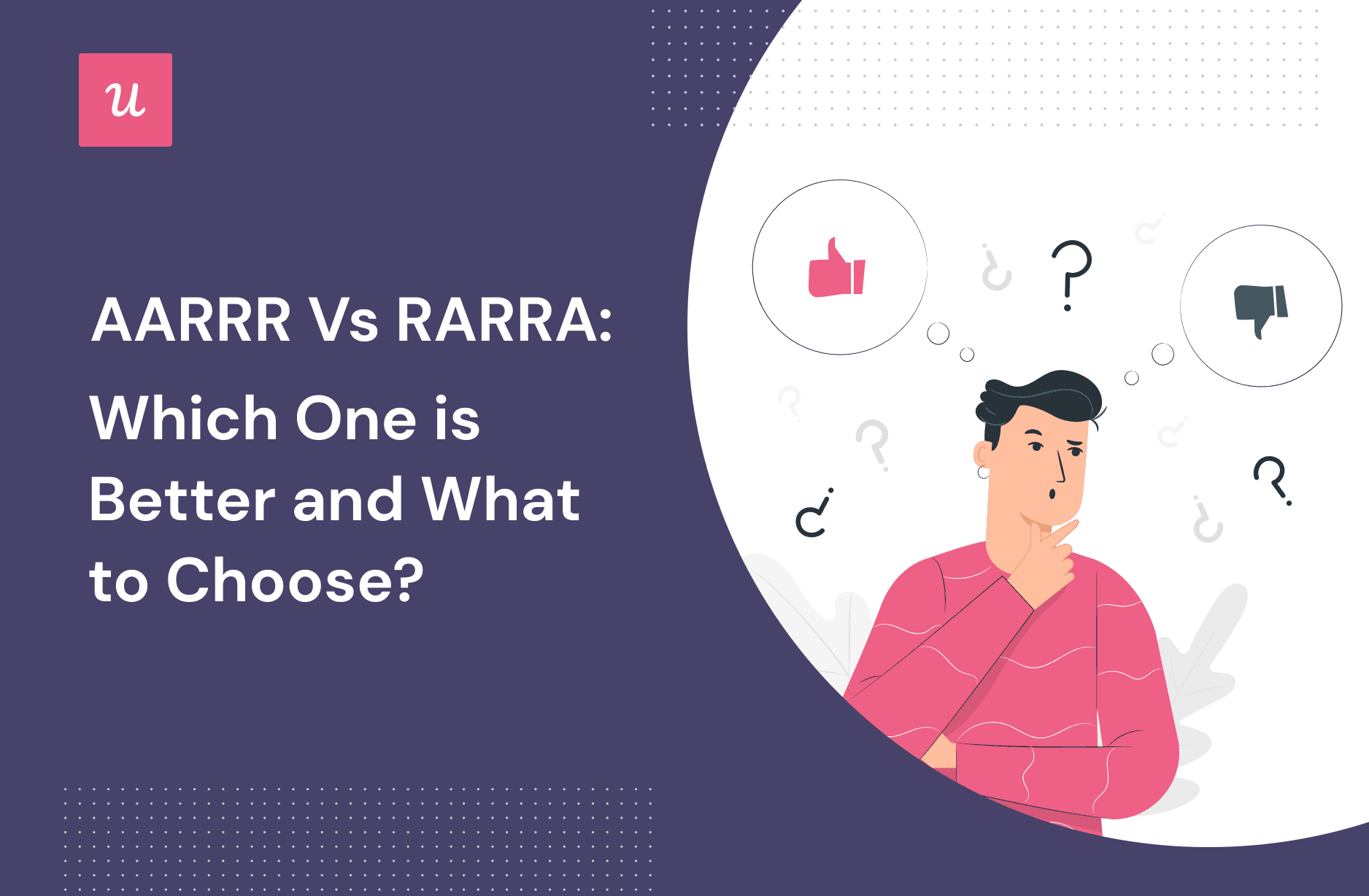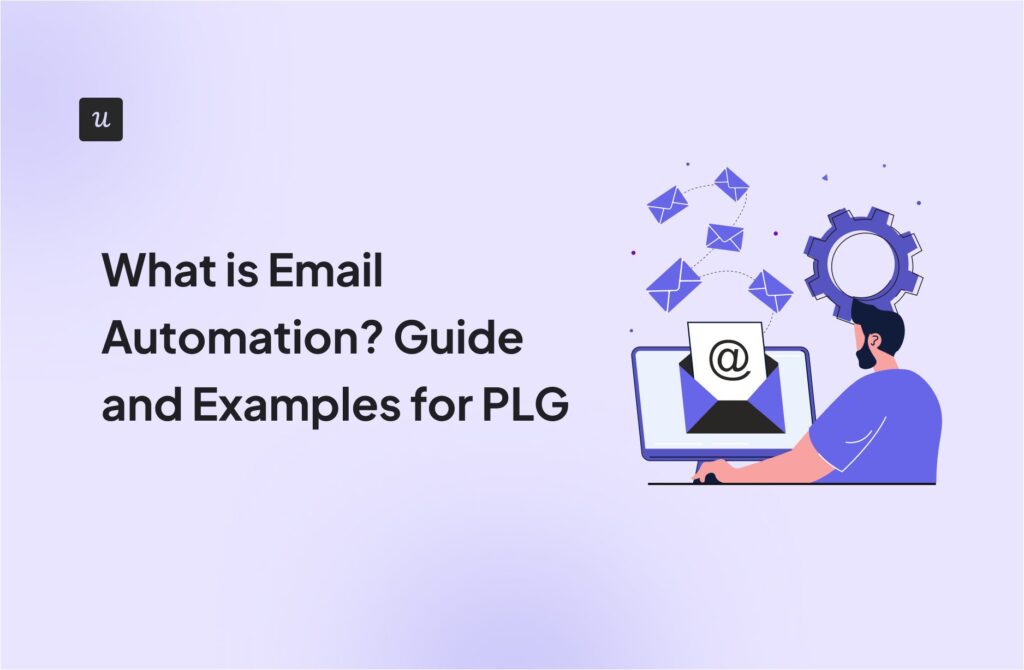
AARRR vs. RARRA model: Which one should you use?
The AARRR funnel, also known as the pirate metrics framework, is a set of metrics you can use to track and impact critical user behavior to bring about product-led growth.
Businesses all around the world have used this framework to track their growth and to learn what stage of the funnel requires attention. It was a gold standard of business growth metrics for many years until the RARRA arrived, a modification of the original model.
Let’s find out what they’re all about.
Try Userpilot Now
See Why 1,000+ Teams Choose Userpilot

Summary of AARRR vs RARRA
- Dave McClure developed a funnel consisting of 5 stages of the customer journey to group and track growth metrics. The acronym AARRR stands for acquisition, activation, retention, referral, and revenue.
- The RARRA model is the modified version of the AARRR funnel, which stands for retention, activation, referral, revenue, and acquisition.
- Both the AARRR and RARRA frameworks can cater to your business at different periods. The better model for you depends on the stage of the business you’re currently in, your business objectives, and your competitors and industry.
- In the first stage, you need to start growing by acquiring more of your target audience, making AARRR the more appropriate model.
- The current business stage eventually influences your business objectives.
- If you have a high customer acquisition cost with mediocre retention rates, RARRA is the better growth model for you. However, if you’re providing a novel solution in a market with less competition, AARRR is the better option.
- The RARRA model is popular for supporting the product-led growth strategy and complements the North Star Metric framework.
- The right metrics for either model are activation rate, the number of demos booked or signups, user retention rate, Net Promoter Score, monthly recurring revenue, expansion MRR, and customer lifetime value.
- You can use a tool like Userpilot to send in-app churn surveys to learn why customers leave your product. You can also use it for customer segmentation and perform cohort analysis to understand the behavior of each user segment and what you can improve.
- Speed up user activation by designing an onboarding flow that helps users complete the key in-app actions that would make them find value in your product and, thus, activate.
- You can expand your existing user base by incentivizing those who are already satisfied with your product to engage in referral programs.
- Upsell and cross-sell opportunities, behavioral analytics, and in-app micro surveys help you understand your customers better, improve their experiences, and boost their customer lifetime value.
- Customer segmentation allows you to identify the acquisition channels that bring in your most valuable and loyal customers.
What is AARRR?
Dave McClure from 500 Startups created the pirate metrics funnel in 2007. He developed a funnel comprising 5 stages of the user journey to group and track growth metrics.
The acronym AARRR stands for acquisition, activation, retention, referral, and revenue. The funnel allows product managers and marketers to define and measure the metrics in these customer lifecycle stages and optimize the funnel for particular goals at every stage.
-
- Acquisition – When a user visits your website or app for the first time with a perceived value of your product and chooses a trial run.
- Activation – A user activates when they complete action(s) that make them experience the actual value of your product for the first time.
- Retention – You’ve retained a customer when they keep returning to your product to experience more value.
- Referral – When a customer finds your product engaging and valuable enough to recommend it to others, either privately or publicly.
- Revenue – When a user subscribes to your product and becomes a paying customer and continues to renew his subscriptions regularly.

However, it’s not mandatory for all companies to use this AARRR framework. Based on the nature of the business and the current stage you’re in, your funnel can have a different arrangement of the AARRR metrics. But, the basic stages of the framework will still be there.
What is RARRA?
The original pirate metrics framework had to be modified and updated to fit your product-driven business model. This tweaked version is the RARRA funnel, which stands for retention, activation, referral, revenue, and acquisition.
- Retention – Get a competitive edge over competitors by providing incredible value that makes sure you retain every user who visits your site/app.
- Activation – Ensure that your users reach the activation point and find value the very first time they visit your product.
- Referral – Motivate users to talk about and share your site/app with others.
- Revenue – Drive conversion to gain paying customers based on your product’s value.
- Acquisition – Acquire more users by getting your paying customers to help you find more users like them.

AARRR vs RAARA. Which one is better for your SaaS growth?
Now the dilemma comes in the AARRR vs. RARRA argument: Which one is better for the sustainable growth of your SaaS business?
Since every business is unique, there’s no right answer to this question. Both these frameworks can cater to your business at different periods. The better model for you depends on:
- The stage of the business you’re in
- Your business objectives
- Competitors and industry.
Let’s have a look at these in detail.
The stage of your business
If you’re a startup, it would be more sensible for you to begin with the AARRR framework. You can’t retain any users if you don’t have them in the first place. Therefore, in the first stage, you need to start growing by acquiring more of your target audience.
To keep growing and retaining customers, it’s advisable to achieve both activation and retention. Referral and revenue will arrive later to keep you on your success trajectory.
Don’t forget to evaluate your strategy just because your retention rate is high. You must monitor your business performance regularly to look for any small or large changes that might require adjustments to your business strategy.

Your business objectives
Your business objectives depend on the stage of business you’re in. Your current business stage is the first thing to focus on since it ultimately affects your business goals.
For example, if you’re in the “Existing” stage of your business, your business goals should be focusing on customer acquisition and boosting conversion rate. But when should you switch over to the RARRA model, and when can you shift back to the AARRR framework?
Let’s find out.
Competitors and industry
If you’re a startup in a competitive market and your retention rate is very low, spending a high amount on acquisition upfront is expensive. So is a high customer acquisition cost when you’re trying to scale your business but your retention metrics are not performing up to the mark. These scenarios make the RARRA model the better option for you.
Bear in mind that AARRR might be the better choice if you’re providing a novel solution in a market with less competition. This is when it’s critical to pay the most attention to the acquisition, albeit, without getting complacent about being the dominant business in the industry.
If a new competitor strikes by directly targeting your customers, you must divert your resources towards implementing retention strategies to withstand the threat.
Why is the RAARR model becoming more popular for product-led growth?
Product-led growth is a strategy that seeks to achieve business growth by retaining existing customers. That’s why the era of product-led growth has stimulated many SaaS companies to choose the RARRA framework.
This model complements the North Star Metric framework that’s commonly used by the B2B SaaS companies. The North Star Metric focuses on a single core value metric that measures your product’s value to users. It guides your company along the way to achieve fast, sustainable growth.

Moreover, the RARRA model focuses on the following things to drive product-led growth:
- finding account expansion opportunities
- improving customer lifetime value (CLV)
- nurturing the product qualified leads (PQLs)
- establishing strong relationships with the active users
- converting active users into power users
- turning power users into brand advocates.
In addition, this framework is applicable to you regardless of your position in the product adoption curve. It helps you to figure out all the AHA! moments and activation point for the different users, and later create a smooth customer journey for each of them. You can retain more customers once they complete the important in-app actions that drive more value.
What are AARRR/RARRA metrics for each stage?
Let’s go through the AARRR/RARRA metrics for each stage.
- Activation stage – The right metric to focus on at this stage is the user activation rate. To calculate the activation rate, divide the number of users who reached the activation milestones during a specific period by the number of users at the start of that period, then multiply the ratio by 100.
- Acquisition stage – Customer acquisition occurs when a user chooses to sign up for a demo or free trial of your product. Thus, you can track metrics like the number of demos booked or signups to assess how well your site/app and its landing pages are driving conversion.
- Retention stage – The customer retention rate plays a crucial role in tracking the success of this stage. To measure retention, divide the number of existing customers at the end of a given period by the number of customers present at the beginning of that period, and multiply the result by 100.
- Referral stage – The Net Promoter Score (NPS) is a measure of user sentiment and loyalty, making it a great match for the referral stage. The NPS survey lets you ask users how likely they are to recommend your product to others on a scale of -10. Here, promoters are your happy customers who rate you 9 or 10 and are thus more likely to spread positive reviews. Tracking the NPS metric helps you gain insights into how many users are dissatisfied and improve their experiences accordingly.

- Revenue stage – The revenue stage depends on subscription renewal rates and account expansion via upsells, cross-sells, and add-ons. Thus, you should measure the monthly recurring revenue (MRR) and expansion MRR to track your revenue growth and the customer lifetime value to predict the expected revenue stream from each customer.
How to boost your SaaS growth using RAARR?
Simply measuring the RARRA metrics won’t get you anywhere. You need to incorporate the insights from these metrics into your business growth strategy to see results.
Here’s what you can do to optimize each stage of the funnel.
Prioritize customer retention
Dig deeper into how, why, and when your customers return to your product. Get the exact number of users who renew their subscriptions and, at the same time, find out which stage of the funnel experiences the highest churn.
Userpilot also allows you to send in-app churn surveys to know why customers are leaving and even suggest alternatives to churning, such as pausing their accounts. Explore how you can improve the retention in your mobile app with Userpilot’s brand-new mobile features. You can even send automated and personalized in-app responses based on the users’ answers.

Moreover, Userpilot lets you create customer segments based on the various user personas and use cases. You can perform cohort analysis to learn which segments you retain, what value they gain from your product, the days on which they use your product for longer, what features they use the most, etc.
All these data form the basis for moving on to the next stages of the framework. They will also help you improve user experiences such as providing quick fixes or sending personalized push notifications.
Speed up user activation
The primary user onboarding experiences are crucial for directing users to the initial AHA moment and activation milestones. Try to make your signup flow as frictionless as possible.
In addition, use welcome screens to know who your users are so that you can segment them. Then, identify the key in-app events for each user segment and use your onboarding flow to help users complete these events and activate them faster.
A successful onboarding process can improve CLV by a staggering 670 % and retention by 90 %. Userpilot allows you to use tools like checklists and tooltips to improve the activation rate. You can also use interactive walkthroughs to guide users on how to use the product.
Walkthroughs let you educate users on the product by providing only relevant information at the right time. Here’s an example of Kommunicate’s interactive walkthrough on chat widget styling.

Incentivize users to get referrals
A study by Nielsen revealed that 92 % of people would trust their friends’ recommendations. This means you have a very good chance of boosting your revenue by getting users to share their positive experiences with others.
You can expand your existing user base by incentivizing those who are already satisfied with your product. They can either leave a positive review on your site/app or do some word-of-mouth advertising for you.
Moreover, referred users boost the retention rates and referral programs usually cost less per acquisition than other channels.
To get started with a referral program, you can provide referral rewards. These could be a special offer or a certain percentage discount on the next billing. You can use pop-ups, push notifications, and emails with links to the referral program so that users can easily understand what to do.
This also helps existing users to engage more with your business. Furthermore, it’s even better for your acquisition efforts to reward both who refer and who are referred.
This is how Dropbox encourages users to invite others to its product.

Increase the customer lifetime value
The lifetime value of a loyal customer who has stayed with you for a long period is greater than that of someone you just acquired. This is because long-term customers provide steady revenue that makes it easier to predict future revenue streams, and thus growth.
This also means you have enough money to spend on acquisition. You can send progress and achievement emails monthly or even weekly to remind users of their business value. You can also let them know how much value they’ve gained over the course of their journey with you.
Other ways to improve customer lifetime value are by identifying upsell and cross-sell opportunities, such as providing special discounts or free delivery with a minimum purchase amount.
Plus, using behavioral analytics can help you send personalized offers to users for product bundles, related products, or popular products.
Userpilot helps you use microsurveys, such as customer satisfaction surveys, to gain user feedback. This will help you learn their pain points and reduce churn by improving their experiences, your referral programs, etc., accordingly. Userpilot also lets you customize in-app mobile surveys with any type of question and trigger.
Choose the right acquisition channels
The acquisition doesn’t guarantee retention but you need to think wisely before choosing an acquisition channel. You can use a tool like Userpilot to segment customers based on their use cases to identify the best acquisition channels for your business.
By using the data you can look further down the funnel and find where your most valuable and loyal users come from.
Wrapping it up
The AARRR vs. RARRA debate is endless but the better option for you depends on:
- your current business stage
- your business goals
- your industry and competitors.
If your acquisition costs are on the rise and retention rates are not up to the mark, maybe it’s time to switch to the RARRA funnel. On top of this, if you’re aiming for product-led growth, RARRA becomes the best option.
To optimize your RARRA funnel, you should boost retention, speed up activation, launch successful referral programs, improve your CLV, and focus on the right acquisition channels. This will ultimately help you gain loyal, power users.
Want to improve your product growth metrics and get valuable insights into your customers’ behavior? Get a Userpilot demo and see how you can achieve product-led growth.






